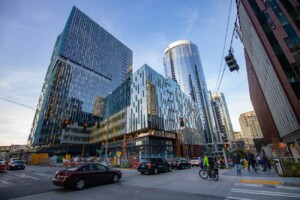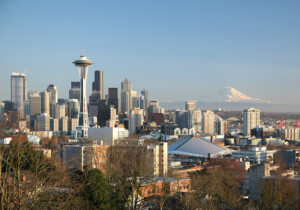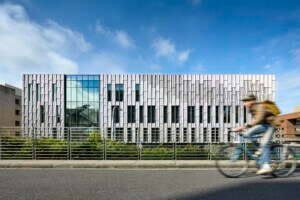The Seattle City Council voted this week to rezone the city’s Downtown and South Lake Union neighborhoods.
The proposed changes reflected the Mandatory Housing Affordability (MHA) requirements of Mayor Ed Murray’s Housing Affordability and Livability Agenda (HALA) plan that aims to increase overall housing production across the city, with a special focus on the development of affordable and rent-controlled units. The plan, as adopted, calls for the creation of up to 2,100 affordable units as a result of the Downtown and South Lake Union rezones.
However, because MHA does not mandate developers build affordable units in the newly-rezoned neighborhoods, it is impossible to know if those affordable units will be located there or elsewhere in the city. The upzoning measures in these neighborhoods will allow proposed buildings, generally speaking, higher maximum heights and, for some areas, it will allow a greater floor-to-area (FAR) ratio as well.
Downtown and South Lake Union make up the second set of Seattle neighborhoods to undergo upzoning as a part of the plan. The U-District surrounding the University of Washington campus was rezoned earlier this year.
The plan is to increase zoning in over two dozen neighborhoods across the city over the next few years with the aim of ultimately adding an estimated 6,000 new affordable units, overall. Generally speaking, the plan mandates developers to either include a certain percentage of new units as affordable housing—two to five percent of the new dwelling units produced through the zoning changes in the Downtown and South Lake Union districts—or pay a certain price per square foot of new construction into a fund that will be used by the city to develop the units somewhere in the city. For the newly-rezoned districts, those fees average between $5.50 to $13 per square foot of new construction, considerably lower than the $5 to $32.75 per square foot to be mandated in other areas.
The discrepancy, according to the Seattle Times, arose because of the mayor’s so-called “grand bargain,” that sought to wrest funds and affordable units from developers without depressing the overall production of market rate units. The new zoning measures are due to bring widespread urban change for the growing region, which like many other metro areas across the country, is suffering from staggering rent increases, housing shortfalls, and a shortage of high-density, pedestrian- and mass-transit-oriented neighborhoods.










